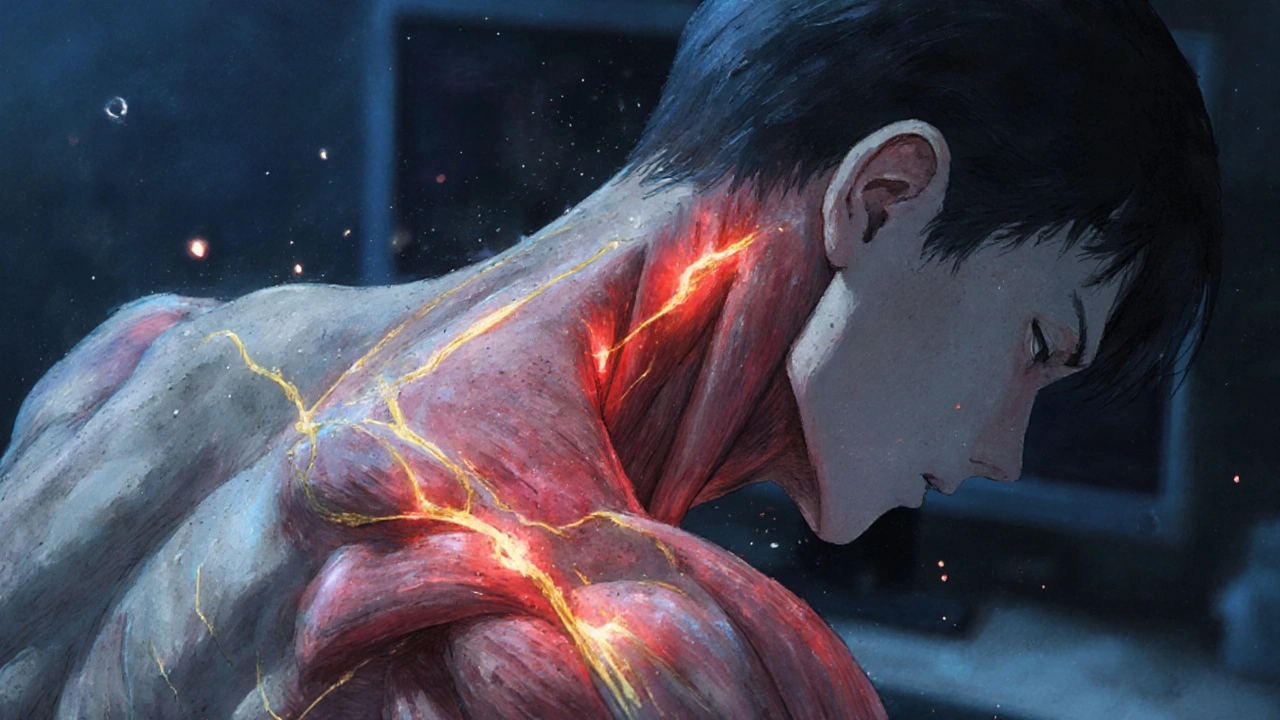Trigger Points: What They Are, How They Cause Pain, and What Works
When you feel a deep, aching pain in your shoulder that won’t go away—even though you haven’t injured it—you might be dealing with a trigger point, a hyperirritable spot in a skeletal muscle that causes pain in a predictable pattern. Also known as muscle knots, trigger points aren’t just tension—they’re functional problems in muscle tissue that can refer pain to your neck, head, or even down your arm. These aren’t imaginary. Studies using ultrasound and electromyography show they’re real, measurable spots of sustained muscle contraction that don’t relax like normal tissue.
Trigger points don’t appear out of nowhere. They form from overuse, poor posture, injury, or even stress. A desk worker with rounded shoulders? Likely developing trigger points in the upper trapezius. A runner with tight hamstrings? Those knots could be sending pain into the back of the knee. And here’s the catch: the pain you feel isn’t always where the trigger point is. A trigger point in your buttock can make your thigh hurt. One in your jaw can mimic a toothache. That’s why so many people chase the wrong source of pain for months.
What helps? Not always what you think. Massage, foam rolling, and stretching can ease symptoms, but they often don’t fix the root. trigger point therapy, a targeted manual or needle-based technique to release the tight band in the muscle works better when done right. Dry needling, done by trained physical therapists or doctors, has strong evidence for breaking up these knots. Heat, electrical stimulation, and even certain NSAIDs can reduce the inflammation around the area. But if you’re just massaging the spot that hurts, you’re missing the point. The trigger point is the source, not the pain location.
And here’s something most people don’t realize: trigger points often show up alongside other conditions. If you have myofascial pain, a chronic pain disorder caused by trigger points that persist and spread, it’s not just "bad muscles." It’s a nervous system issue where your brain keeps interpreting signals from those knots as dangerous. That’s why pain can linger even after the muscle seems fine. This isn’t weakness. It’s biology.
Some trigger points respond fast. Others take weeks. And if you’re on long-term pain meds like NSAIDs or opioids, you might be masking the problem while making it worse. Opioids, for example, can lower testosterone and increase muscle sensitivity—making trigger points more likely to form and harder to treat. That’s why the best approach combines direct treatment with lifestyle fixes: better posture, movement breaks, hydration, and sleep. No magic pill. Just smart, consistent action.
Below, you’ll find real-world guides on how to identify these knots, what treatments actually work (and which ones are just hype), how they connect to other pain conditions like spinal stenosis or arthritis, and what to do when standard advice fails. No fluff. Just what helps—and what doesn’t.
Myofascial Pain Syndrome: Trigger Points and How to Release Them
Myofascial pain syndrome is caused by trigger points in muscles that refer pain elsewhere. Learn how to identify them, what causes them, and the most effective release techniques-from dry needling to self-massage-with real-world results.
© 2025. All rights reserved.

